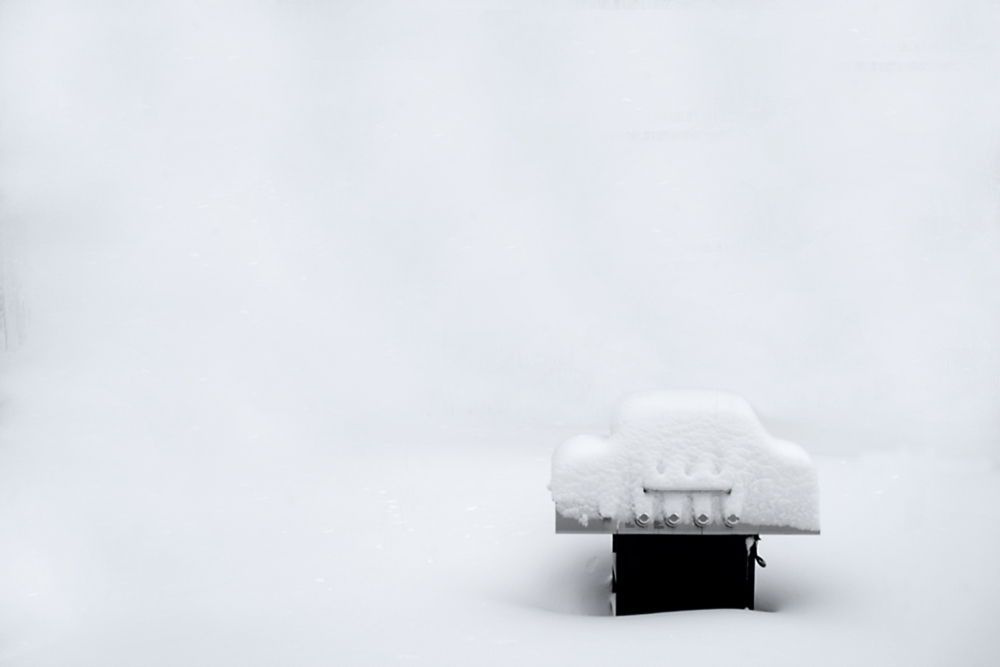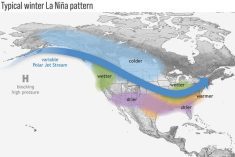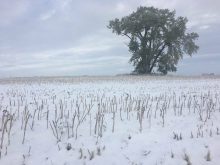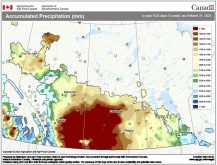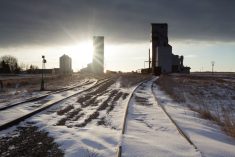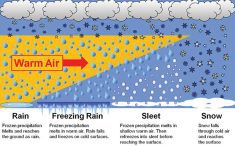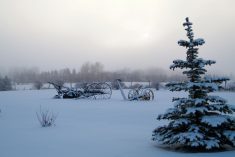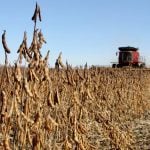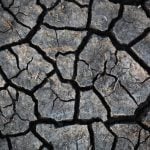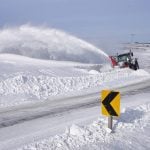It’s getting pretty late in the winter, and if you’re a Prairie farmer or skier — or maybe both — you might wonder if there’s still a chance for more moisture in the form of snow.
As I have mentioned on several occasions over the years, March and April have seen some of our biggest snowstorms. During this time of year, warm, moist air begins its yearly push northward, while to our north, cold arctic air is usually in place and often reluctant to let go. We can get some truly big snowstorms when the two combine.
I thought I would look back at these spring snowstorms, relying on data from main reporting centres in each of the three Prairie provinces. We will start in the east and work our way westward.
Read Also
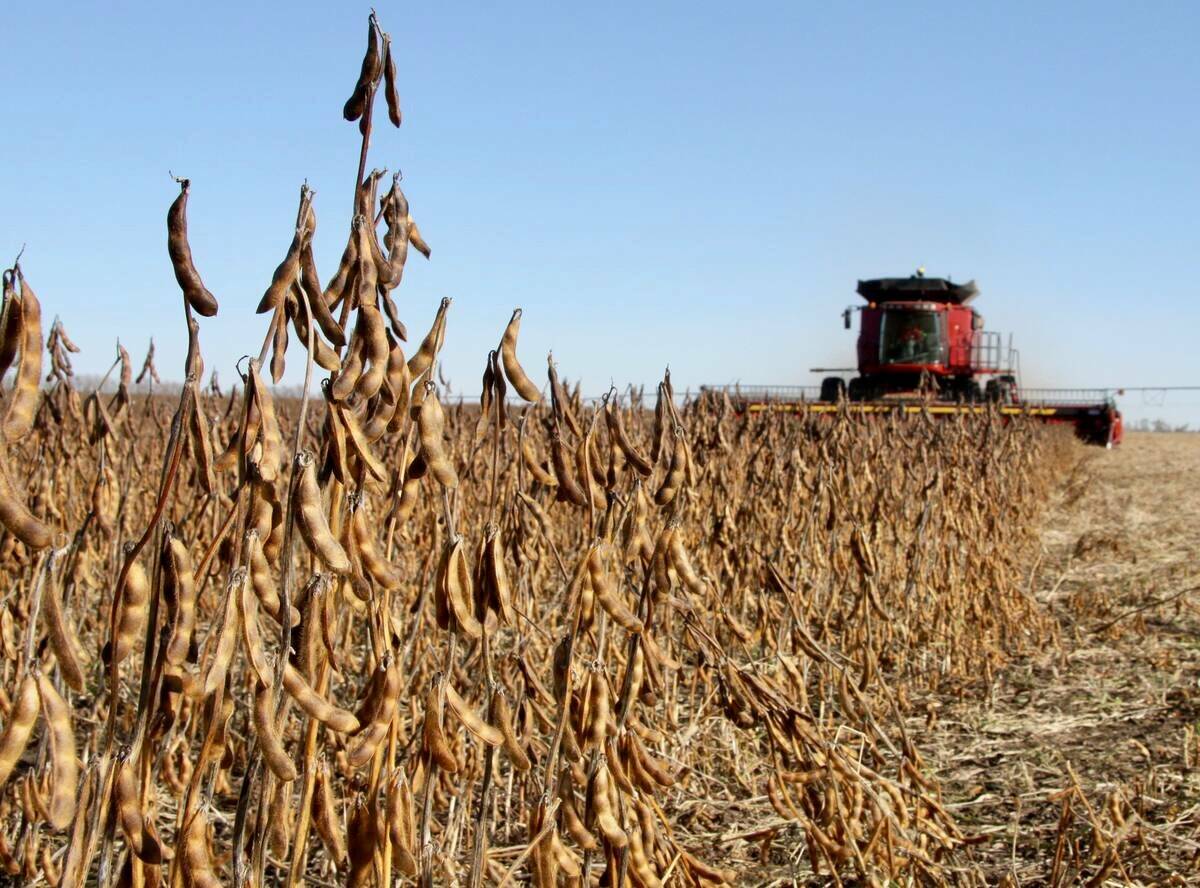
Much of Alberta misses fall moisture recharge
October saw the Western Prairies stay dry, while the east was waterlogged
Manitoba
Let’s begin with Winnipeg. Over the last 140 years, there have been 12 times that it has recorded 20 cm or more of snow on a single day in March. The most recent was 20.0 cm on March 8, 1999. The largest March snowstorm that I could find was back in 1935 when 53.1 cm of snow fell between March 3 and 6. Interestingly, the next-largest snowstorm occurred at nearly the same time (March 4) in 1966, when 35.6 cm of snow fell.
Winnipeg has recorded some of its highest snowstorm totals in April, with five days having snowfall greater than 20 cm. The two largest April snowstorms over the past 140 years have occurred fairly recently. Both were early in the month, with the 1997 storm recording 46 cm of snow between April 4 and 6. Nearly the same amount (45 cm) fell between April 1 and 4 of 1999.
Now on to Brandon. Since 1890, Brandon has recorded 16 days in March with snowfall higher than 20 cm. The most recent was in 2018, when 28.6 cm of snow fell on March 4 and 5. The largest March snowstorm that I could find was in 1953, when 39.3 cm of snow fell between March 26 and 28. April in Brandon has also seen its fair share of large snowfalls. During this month there have been nine days with more than 20 cm recorded, with the most recent on April 27, 1984, when 29.7 cm fell.
The largest spring snowstorm I was able to find was back on April 26, 1961, when a whopping 47 cm fell in just one day! The next-largest spring snowstorm was on April 26-27, 1984, when the Brandon region received nearly 36 cm.
Saskatchewan
Unfortunately, my Saskatchewan data are a little lacking for some reason, so if someone out there has some good snow records, let me know. I did do some digging as best I could into Regina’s data and while there were plenty of snowy months of March, I was only able to find one large snowstorm. That was back in 1927 when 35.5 cm of snow fell from March 15 to 17. In April, there were more storm events, with the most recent in 2003 when 21.5 cm fell between April 1 and 5. The largest April storm event I could find was in 1979, when 29.6 cm fell from April 11 to 13. There was also a decent storm that dropped 23.3 cm between April 26 and 28, 1966.
Alberta
Moving on to Alberta, where my data are a little better, we’ll start by looking at Calgary, where March has seen some decent-sized snowstorms, with the biggest on March 16-17, 1998, when 39.0 cm of snow fell.
But April is the month of some truly big snowstorms for this region. Looking back through Calgary’s weather records, I was surprised at just how many snowfall days occur during April. The biggest April snowstorm I was able to find was in 1932, when an amazing 49.3 cm of snow fell between April 20 and 21. Then, only one year later, a storm hit on April 15 and lasted through to the 17th. Nearly 46 cm of snow fell that year.
Another 40-plus cm snowstorm occurred between April 25 and 27 1966, when 45 cm fell. More recently, 38.5 cm fell between April 26 and 28, 2003. This storm recorded the second-highest one-day snowfall total for April when 32.2cm fell on April 26. If you noticed, this same storm also hit Saskatchewan.
The highest single-day snowfall total for April was during the 1932 storm, when an absolutely amazing 45.7 cm of snow fell on April 21.
Farther north, the number of spring snowfalls is not as great as in the Calgary region, but Edmonton has still seen its fair share of large snowstorms, especially in April. The largest March storm I was able to find occurred in 1974 when between the 13 and 15th of the month a total of 30.3 cm fell. The largest April snowstorm was in 1955, when a whopping 47.5 cm of snow fell between April 18 and 20. Yet another big April storm hit in 1948 when 43 cm of snow fell between April 1 and 3.
The third-biggest storm was a bit more recent, from April 6 through 7 of 1991, when nearly 41 cm of snow fell, of which 36 cm was on April 6. This is currently the second-largest one-day snowfall record for April. The largest one-day total was on April 19, 1955, when 38cm fell. The most recent big snow event was in 2002 when 28cm fell on April 14 and 15.
As the stats point out, some of the largest snowstorms to hit our part of the world have arrived in March or April. Maybe this will give some hope to those in regions suffering from a dry winter, and looking for moisture in any form.


